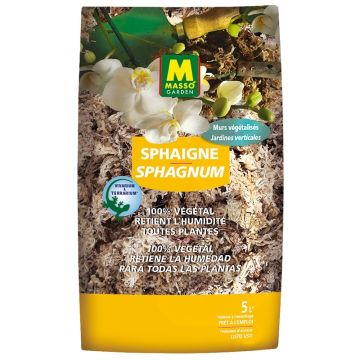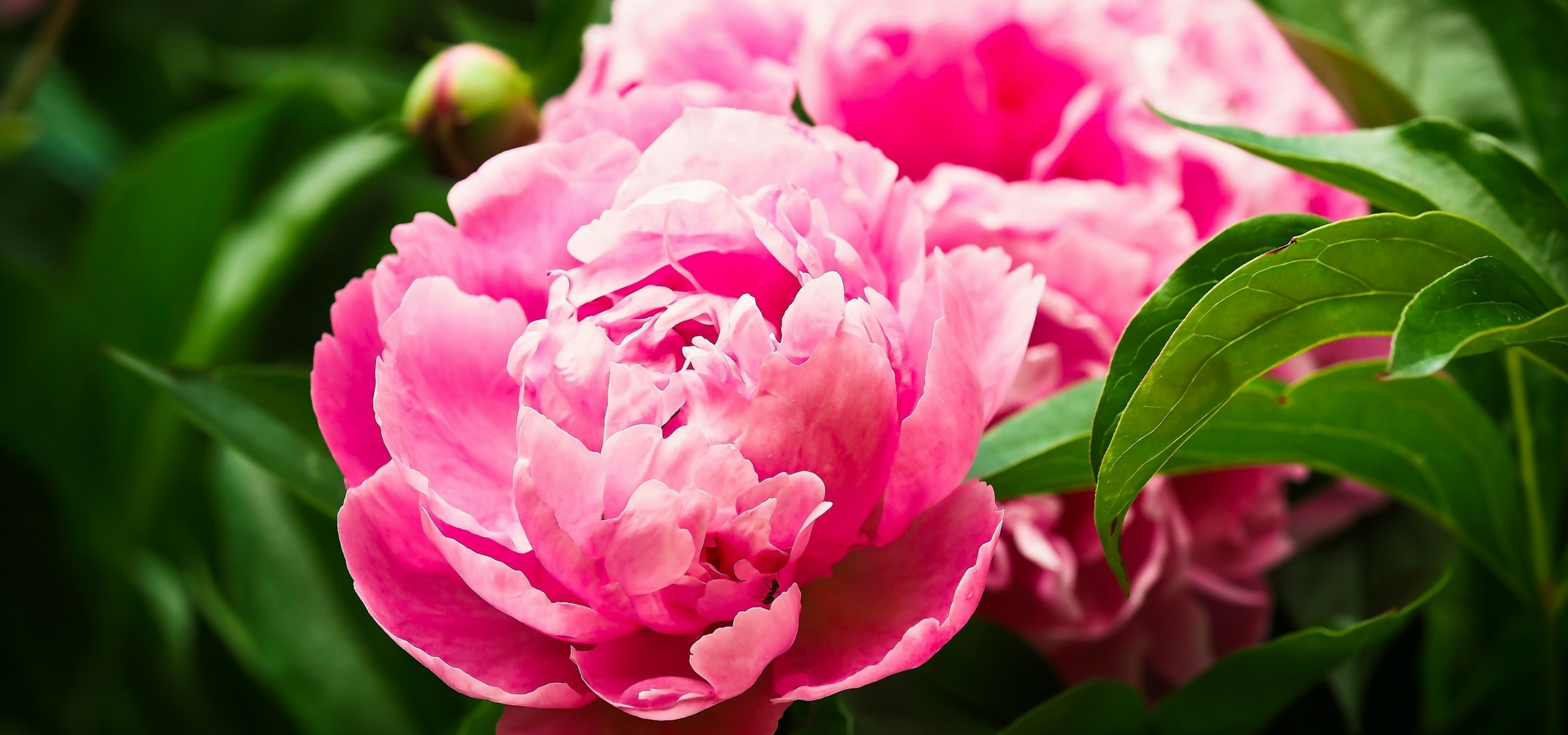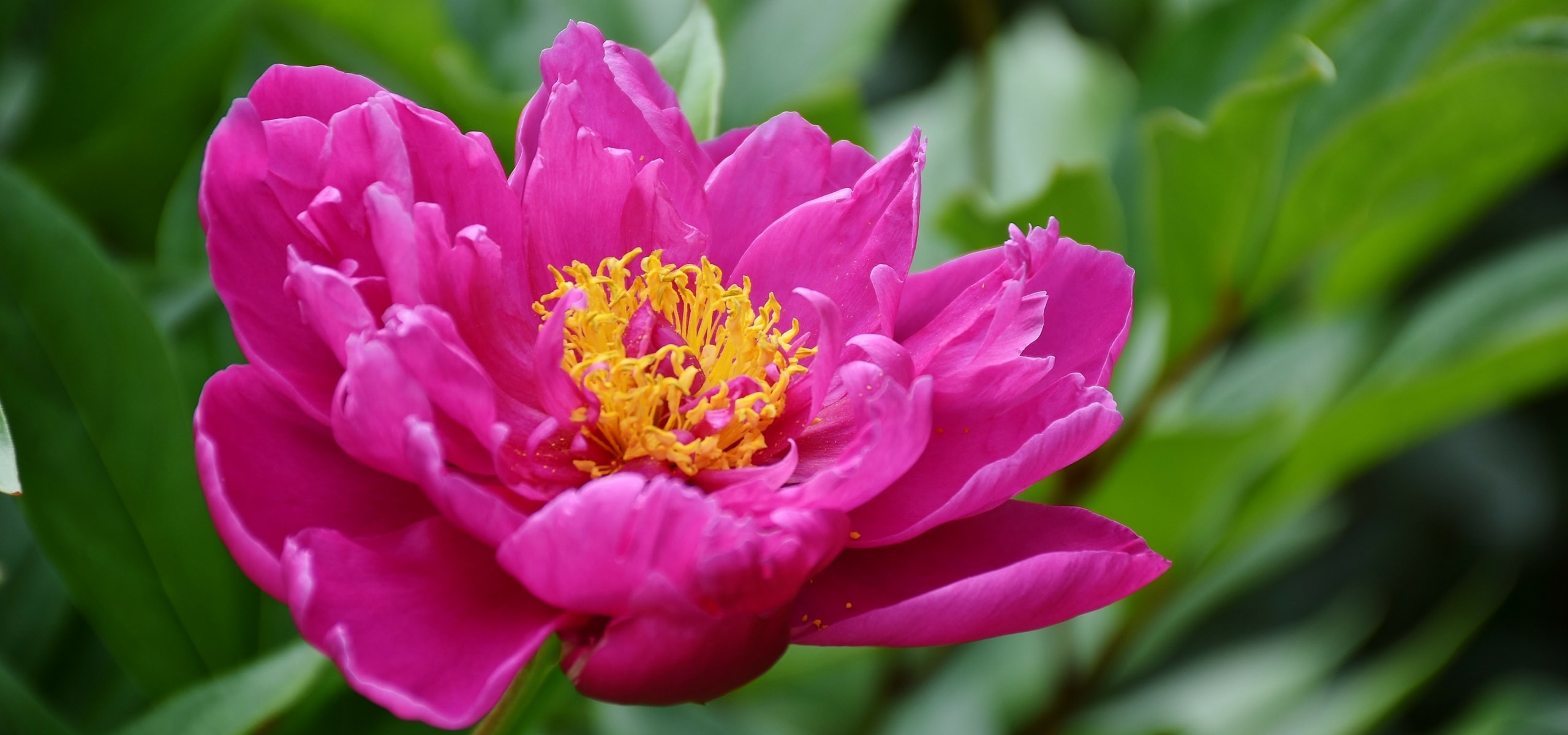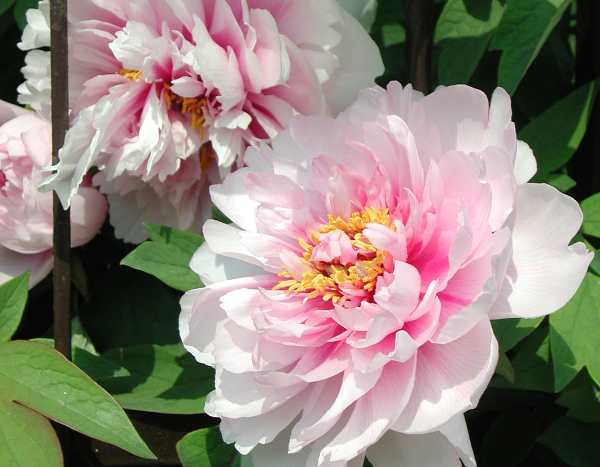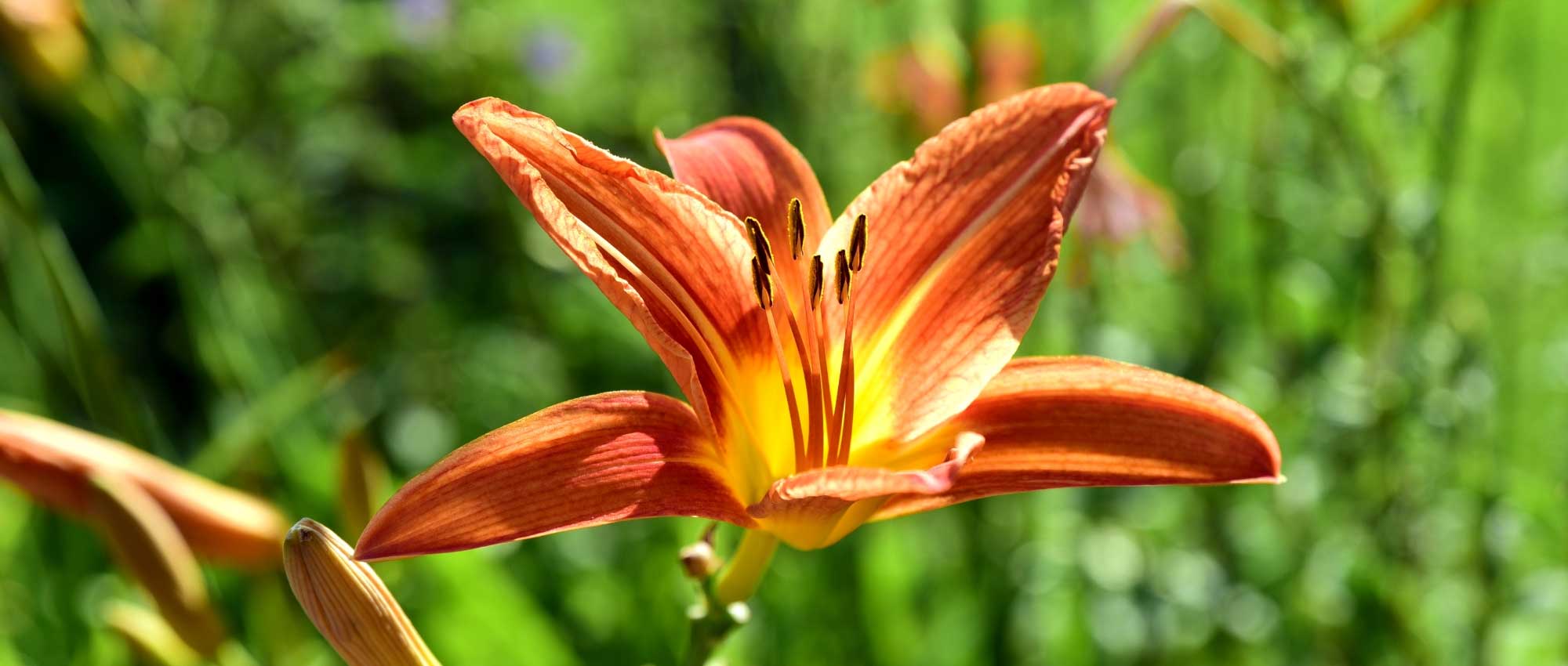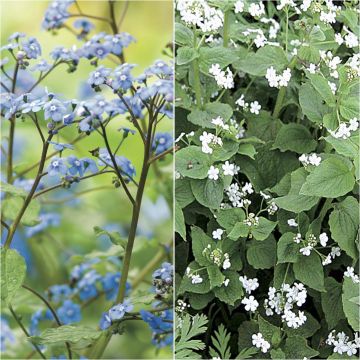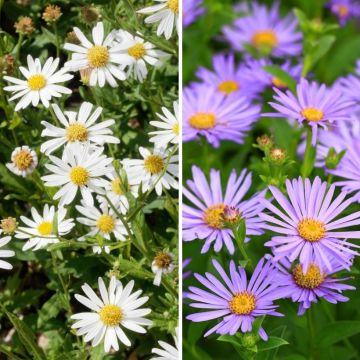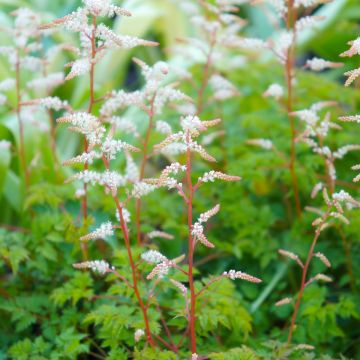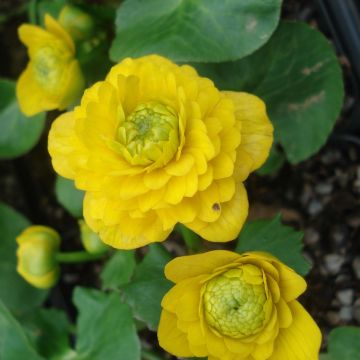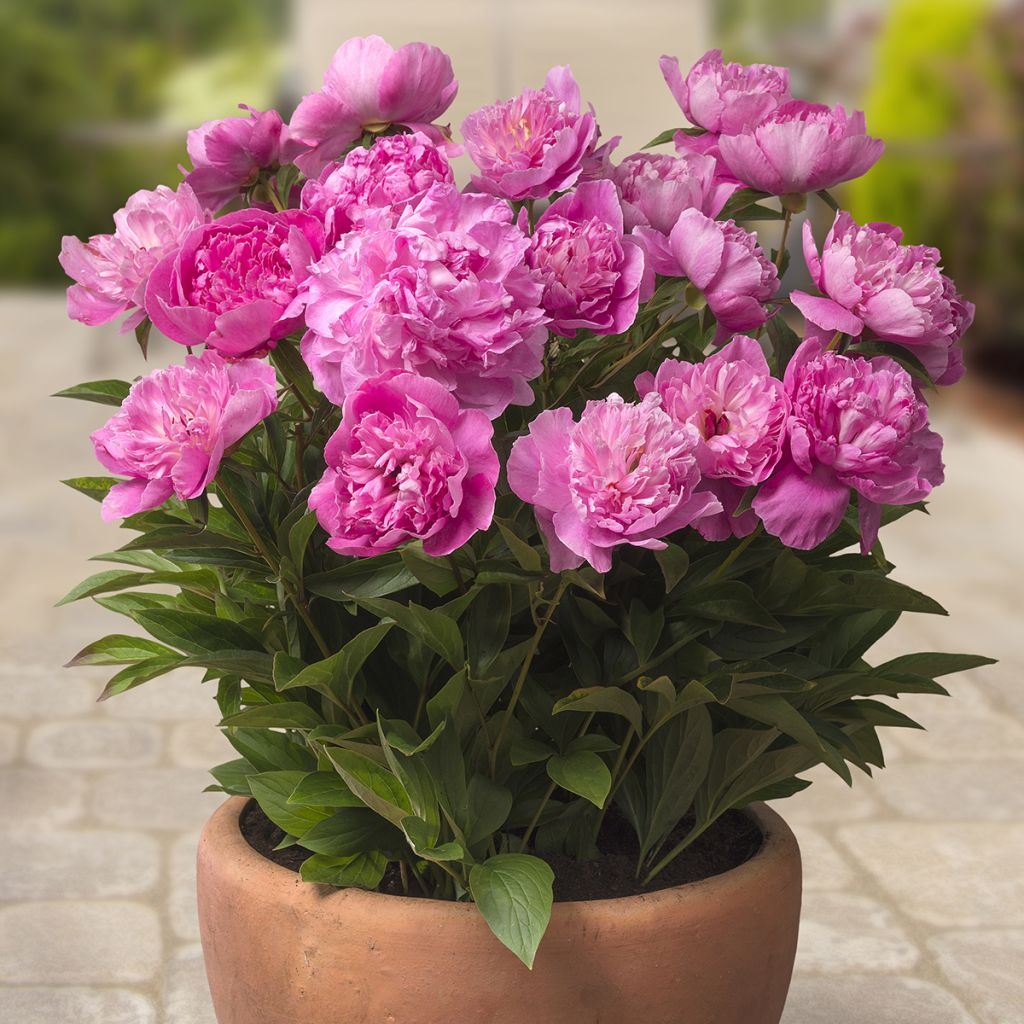

Paeonia x lactiflora Rome - Pivoine herbacée naine 'Rome'
Paeonia x lactiflora Rome - Pivoine herbacée naine 'Rome'
Paeonia x lactiflora Rome
Pivoine herbacée naine 'Rome'
Special offer!
Receive a €20 voucher for any order over €90 (excluding delivery costs, credit notes, and plastic-free options)!
1- Add your favorite plants to your cart.
2- Once you have reached €90, confirm your order (you can even choose the delivery date!).
3- As soon as your order is shipped, you will receive an email containing your voucher code, valid for 3 months (90 days).
Your voucher is unique and can only be used once, for any order with a minimum value of €20, excluding delivery costs.
Can be combined with other current offers, non-divisible and non-refundable.
Home or relay delivery (depending on size and destination)
Schedule delivery date,
and select date in basket
This plant carries a 12 months recovery warranty
More information
We guarantee the quality of our plants for a full growing cycle, and will replace at our expense any plant that fails to recover under normal climatic and planting conditions.
Would this plant suit my garden?
Set up your Plantfit profile →
Description
The Patio Peony Rome is a compact variety of Chinese Peony from the Patio range, which as its name suggests, was specifically developed for container growing to adorn terraces, balconies, and patios. Its low-growing foliage of a beautiful deep green is particularly dense, and its sturdy flowering stems allow for the creation of a superb flowering pot. Beginning towards the end of May, its flowering period blooms until early July in the form of large flowers of a strong candy pink. The thick-packed double petals largely conceal the yellow stamens while the smart corollas are well highlighted by the darker foliage. Perfect in a container, this very hardy Peony can also be cultivated in open ground in the garden, where it prefers sunny spots and cool, but well-drained soil.
Classified in the Paeoniaceae family of which it is the sole member, the Peony (Paeonia in botanical Latin) was previously attached to the Ranunculaceae. With fewer than 40 species including the famous Tree Peonies (Paeonia suffruticosa), it is the subject of genuine veneration by gardeners and collectors worldwide. The Chinese Peony (Paeonia lactiflora) is a perennial plant native to southeastern Siberia to northeastern China, regions with a very harsh climate, which explains its robustness against the cold. In winter, its foliage disappears, but in spring, new buds emerge, bringing the plant back to life. Cultivated for over two millennia in China, initially for medicinal purposes, it was introduced to Europe in the 18th century and gained popularity in the late 19th century. It was also intensely hybridised by specialist nurseries, notably in France.
The Patio Peony collection was developed by a Dutch nursery with the aim of promoting container growing to decorate terraces and patios. It currently comprises eight hybrid varieties of Chinese Peonies with single, semi-double, or double flowers, of varying precocity and in shades ranging from white to red through various shades of pinks, to satisfy all tastes. The Peony 'Patio Peony Rome' is a relatively compact variety measuring approximately 60 cm in height and 50 cm in width. It forms a dense clump of deeply cut, deep green, slightly satin-like leaves of a healthy and decorative appearance. This somewhat dark foliage offers a beautiful setting for the lighter coloured flowering. Beginning in the second half of May or in June, depending on the climate, and blooming until July, the flowers are very thickly double. The numerous slightly undulate petals on the periphery of the corolla are crinkled towards the centre, giving an undeniable and rather irresistible romantic charm to this perennial plant. They largely conceal the dark pink pistils as well as the yellow stamens located at the heart of the flower. The cup-shaped flowers have a diameter of approximately 8 cm and are borne on sturdy flowering stems. You can cut them to create magnificent indoor vase arrangements. If you choose to plant it in open ground, it will gradually widen each year, so it is important to choose its initial location carefully as it is averse to being transplanted.
The Paeonia lactiflora 'Patio Peony Rome' is an excellent choice for adorning a terrace or patio. To extend the flowering season into summer, you can pair it with a clump of Agapanthus, an exotic, also very floriferous perennial which will take over from July onwards, offering you clusters of flowers often in incredible colours. This peony can also be perfectly integrated into a varied garden bed, mixing bushes and perennials, or an English mixed-border. In this case, play with foliage contrasts by integrating into a less sunny area a few clumps of Heuchera 'Cherry Cola' with coppery red leaves. The Ajuga reptans 'Jungle Beauty', a purple creeping perennial with blue-violet flowers in summer, will also create a beautiful contrast with the bright green of your small peony. However, be sure to leave a safe distance between the two so that this creeping bugleweed does not compete with your Peony.
Flowering
Foliage
Plant habit
Botanical data
Paeonia
x lactiflora
Rome
Paeoniaceae
Pivoine herbacée naine 'Rome'
Cultivar or hybrid
Planting and care
The Patio Peony Rome, like all peonies, dislikes being moved, so careful consideration must be given from the outset to its planting location. The best time to plant is in spring or autumn. Position the stump in a sunny or bright spot, in deep, well-loosened, and most importantly, properly drained soil. It requires space and dislikes competition from other species. Prepare a hole 50 x 50 x 50 cm, add a thin layer of sand or gravel at the bottom to ensure root drainage, mix planting compost with your soil, along with an organic fertiliser. Partially refill, place your plant and cover with 3 cm of soil above the lozest shoot buds. After planting, firm down and water thoroughly. Once established, this peony will not require watering in summer in most regions as it enters dormancy. In hot and particularly dry summer climates, a thorough watering every fortnight will be appreciated. Under these conditions, it will also tolerate light shade.
Planting period
Intended location
Care
Planting & care advice
This item has not been reviewed yet - be the first to leave a review about it.
Similar products
Haven't found what you were looking for?
Hardiness is the lowest winter temperature a plant can endure without suffering serious damage or even dying. However, hardiness is affected by location (a sheltered area, such as a patio), protection (winter cover) and soil type (hardiness is improved by well-drained soil).

Photo Sharing Terms & Conditions
In order to encourage gardeners to interact and share their experiences, Promesse de fleurs offers various media enabling content to be uploaded onto its Site - in particular via the ‘Photo sharing’ module.
The User agrees to refrain from:
- Posting any content that is illegal, prejudicial, insulting, racist, inciteful to hatred, revisionist, contrary to public decency, that infringes on privacy or on the privacy rights of third parties, in particular the publicity rights of persons and goods, intellectual property rights, or the right to privacy.
- Submitting content on behalf of a third party;
- Impersonate the identity of a third party and/or publish any personal information about a third party;
In general, the User undertakes to refrain from any unethical behaviour.
All Content (in particular text, comments, files, images, photos, videos, creative works, etc.), which may be subject to property or intellectual property rights, image or other private rights, shall remain the property of the User, subject to the limited rights granted by the terms of the licence granted by Promesse de fleurs as stated below. Users are at liberty to publish or not to publish such Content on the Site, notably via the ‘Photo Sharing’ facility, and accept that this Content shall be made public and freely accessible, notably on the Internet.
Users further acknowledge, undertake to have ,and guarantee that they hold all necessary rights and permissions to publish such material on the Site, in particular with regard to the legislation in force pertaining to any privacy, property, intellectual property, image, or contractual rights, or rights of any other nature. By publishing such Content on the Site, Users acknowledge accepting full liability as publishers of the Content within the meaning of the law, and grant Promesse de fleurs, free of charge, an inclusive, worldwide licence for the said Content for the entire duration of its publication, including all reproduction, representation, up/downloading, displaying, performing, transmission, and storage rights.
Users also grant permission for their name to be linked to the Content and accept that this link may not always be made available.
By engaging in posting material, Users consent to their Content becoming automatically accessible on the Internet, in particular on other sites and/or blogs and/or web pages of the Promesse de fleurs site, including in particular social pages and the Promesse de fleurs catalogue.
Users may secure the removal of entrusted content free of charge by issuing a simple request via our contact form.
The flowering period indicated on our website applies to countries and regions located in USDA zone 8 (France, the United Kingdom, Ireland, the Netherlands, etc.)
It will vary according to where you live:
- In zones 9 to 10 (Italy, Spain, Greece, etc.), flowering will occur about 2 to 4 weeks earlier.
- In zones 6 to 7 (Germany, Poland, Slovenia, and lower mountainous regions), flowering will be delayed by 2 to 3 weeks.
- In zone 5 (Central Europe, Scandinavia), blooming will be delayed by 3 to 5 weeks.
In temperate climates, pruning of spring-flowering shrubs (forsythia, spireas, etc.) should be done just after flowering.
Pruning of summer-flowering shrubs (Indian Lilac, Perovskia, etc.) can be done in winter or spring.
In cold regions as well as with frost-sensitive plants, avoid pruning too early when severe frosts may still occur.
The planting period indicated on our website applies to countries and regions located in USDA zone 8 (France, United Kingdom, Ireland, Netherlands).
It will vary according to where you live:
- In Mediterranean zones (Marseille, Madrid, Milan, etc.), autumn and winter are the best planting periods.
- In continental zones (Strasbourg, Munich, Vienna, etc.), delay planting by 2 to 3 weeks in spring and bring it forward by 2 to 4 weeks in autumn.
- In mountainous regions (the Alps, Pyrenees, Carpathians, etc.), it is best to plant in late spring (May-June) or late summer (August-September).
The harvesting period indicated on our website applies to countries and regions in USDA zone 8 (France, England, Ireland, the Netherlands).
In colder areas (Scandinavia, Poland, Austria...) fruit and vegetable harvests are likely to be delayed by 3-4 weeks.
In warmer areas (Italy, Spain, Greece, etc.), harvesting will probably take place earlier, depending on weather conditions.
The sowing periods indicated on our website apply to countries and regions within USDA Zone 8 (France, UK, Ireland, Netherlands).
In colder areas (Scandinavia, Poland, Austria...), delay any outdoor sowing by 3-4 weeks, or sow under glass.
In warmer climes (Italy, Spain, Greece, etc.), bring outdoor sowing forward by a few weeks.
































